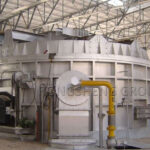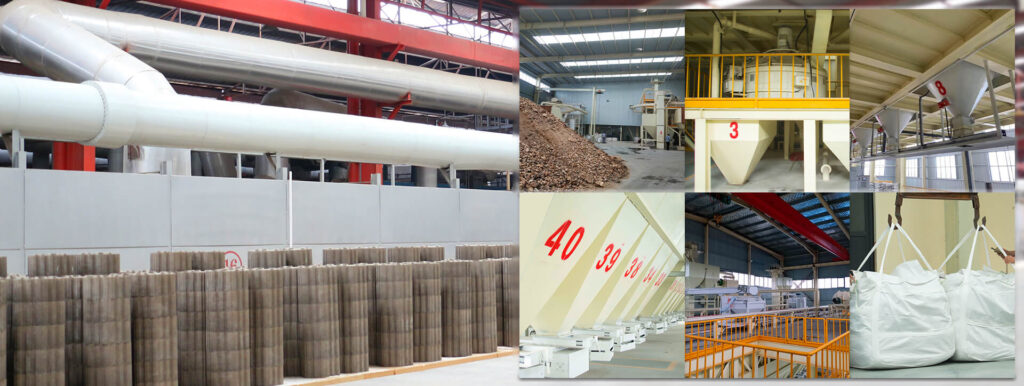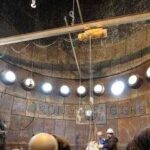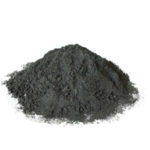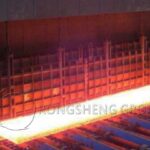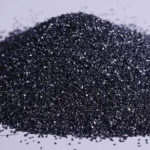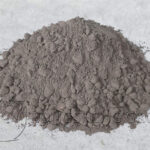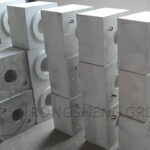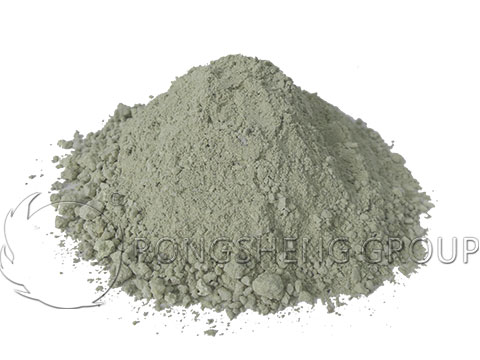
The refractory lining of induction furnace uses ramming material. According to whether or not to add water, induction furnace ramming materials can be divided into dry and wet ramming materials.
At present, the dry ramming material is recognized by most induction furnace manufacturers. The wet ramming material is used to reuse furnace-lined crucibles or to smelt some metals with very low melting points (such as Zn).
The dry ramming material has many advantages that the wet ramming material does not have: it does not contain any liquid binder (water), the drying and sintering time is short, and there is no need to exhaust; the stability is good, the construction speed is fast, the furnace is easy to dismantle, and it is economical. Without the trapping time of wet ramming and the curing time of pouring, the furnace shutdown cycle is relatively short; the sintered-semi-sintered-sintered structure of the furnace lining can keep the volume of the furnace lining stable, resist slag penetration, and prevent the formation of large cracks , Improve the safety of the furnace lining.
According to different chemical properties, ramming material can be divided into neutral ramming material, alkaline ramming material and acid ramming material .
The main component of alkaline ramming material is alkaline oxide. At present, the most widely used alkaline material is magnesium material, which has the advantages of corrosion resistance, high melting point, high softening temperature under load, and no reaction with alkaline slag or alkaline melt.
However, the thermal shock stability of magnesia ramming material is poor, the sintering temperature is relatively high, and the thermal shock during operation will cause cracks and peeling of the lining material, which is only suitable for small-capacity induction furnaces.
The main component of acidic dry ramming material is SiO2. In the presence of other impurities, the crystalline transformation of SiO2 is complicated, and the excessively high heating rate during the oven will greatly reduce the melting temperature of the material. Silica dry ramming material can be used in a variety of induction furnace lining tree materials, it seems that the refractoriness and purity limit its use.
The main components of neutral dry ramming materials are neutral oxides such as Al2O3 or their composites. Corundum dry ramming material has the characteristics of high temperature resistance, good slag corrosion resistance, no influence on the quality of molten steel, short construction time and no baking during construction. It is widely used in the smelting of various alloy steels. Corundum-based dry ramming materials still have shortcomings such as low service life, difficulty in sintering, and difficult control of thermal expansion. The magnesia-aluminum spinel has good resistance to slag permeability. Adding fused magnesia to the corundum material to generate magnesia-aluminum spinel in situ can reduce the penetration of molten iron or slag into the refractory and improve the slag resistance of the material. The secondary spinel reaction during the use of aluminum-magnesium materials can effectively inhibit the cracking of the furnace lining. The aluminum-magnesium ramming material used for the furnace lining can weaken the thermal cracking of the furnace lining material and reduce the generation of micro-cracks in the middle material.
In addition, according to the types of refractory materials used, ramming materials can be divided into silicon ramming materials, corundum ramming materials, magnesia ramming materials, magnesia calcium ramming materials, magnesia aluminum ramming materials, and aluminum-magnesium ramming materials. Beating materials and Al2O3-SiOC ramming materials; according to the different parts of use, the ramming materials can be divided into tundish working lining, electric furnace bottom and power frequency melting channel dry ramming materials.

